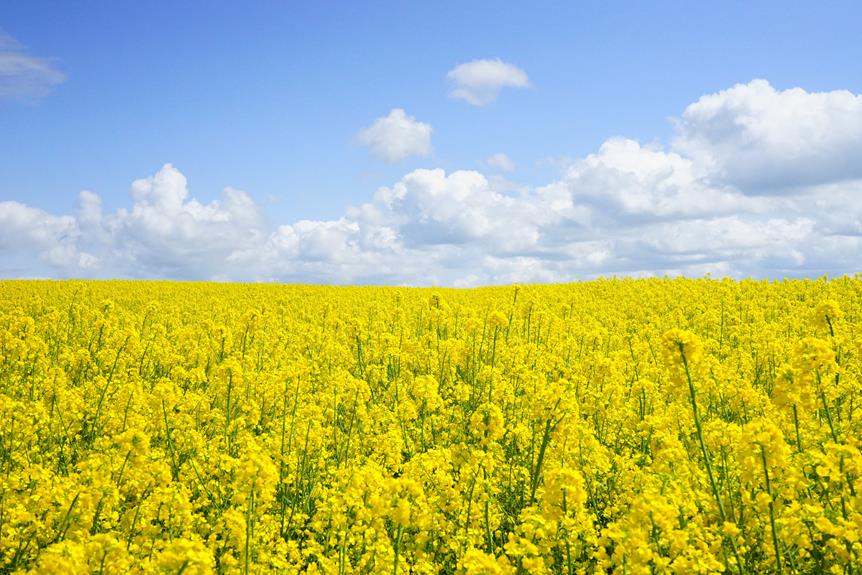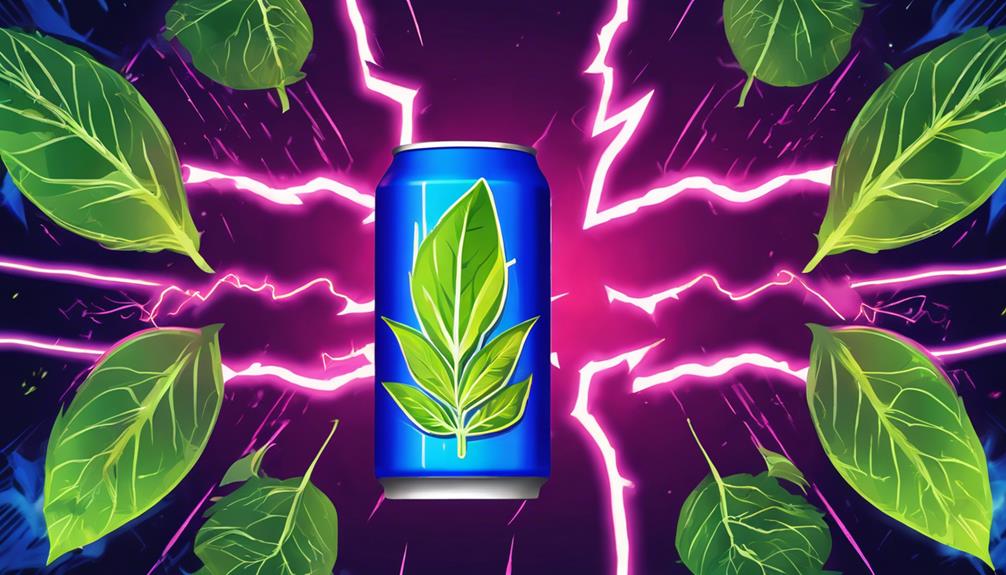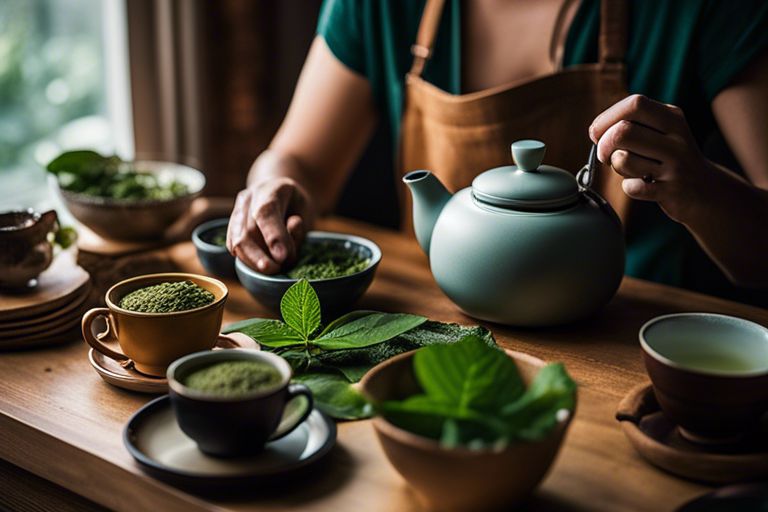Deprecated: mb_convert_encoding(): Handling HTML entities via mbstring is deprecated; use htmlspecialchars, htmlentities, or mb_encode_numericentity/mb_decode_numericentity instead in /home/users/kratomfiles/www/kratomfiles.com/wp-content/plugins/quick-adsense-reloaded/includes/template-functions.php on line 3552
Imagine finding a herbal drink that promises to boost your energy and enhance your relaxation, all in one sip. Picture yourself sipping on a warm cup of Kratom and Kava, feeling the effects gradually taking hold of your mind and body. But before you dismiss this as just another trendy beverage, there's more to these herbal concoctions than meets the eye. In this discussion, we will explore the origins, effects, potential benefits, and safety considerations of Kratom and Kava drinks. So, whether you're curious about trying them or simply intrigued by their reputation, let's uncover the secrets of these herbal elixirs together.
Origins of Kratom and Kava

Kratom and Kava have distinct origins. Kava, derived from the root of the kava plant, has a long history of ceremonial use in Polynesian Island cultures. It has been consumed in Fiji, Hawaii, and other Pacific islands for its relaxing effects. On the other hand, Kratom, derived from a tree in the coffee family, has been a traditional part of Southeast Asian culture for thousands of years.
Kratom is native to Southeast Asia, specifically countries like Thailand, Malaysia, and Indonesia. It has been deeply ingrained in the cultural practices of these regions. The leaves of the Kratom tree have been used by native people for various purposes. Its primary uses include pain relief and mood enhancement. The alkaloids present in Kratom leaves have stimulating effects at lower doses and sedative effects at higher doses. This versatility has made Kratom an integral part of Southeast Asian culture.
Kava, on the other hand, is indigenous to the Western Pacific. It is primarily consumed in Polynesian Island cultures, where it is known as Yaqona. Kava is consumed to reduce stress, anxiety, and pain, as well as to promote relaxation. It has a rich history of ceremonial use in these cultures, often being consumed in social gatherings and religious rituals.
Effects of Kratom and Kava
The effects of the Kratom and Kava drinks are well-known for their ability to induce relaxation and elevate mood. Kratom, derived from the Mitragyna speciosa tree, contains alkaloids that act on the opioid receptors in the brain, providing pain relief and a sense of calm. On the other hand, Kava, made from the roots of the Piper methysticum plant, contains kavalactones that interact with the GABA receptors, promoting relaxation and reducing anxiety.
To provide a clearer understanding of the effects of Kratom and Kava, let's take a look at the table below:
| Effects of Kratom | Effects of Kava | Potential Risks |
|---|---|---|
| Pain relief | Relaxation | Poor health |
| Increased energy | Reduced anxiety | Scaly rashes |
| Mood elevation | Flu-like symptoms | |
| Sedation | ||
| Improved focus |
Both Kratom and Kava have addictive properties and potential risks. Regular use of Kava can lead to physical dependence, resulting in withdrawal symptoms such as anxiety and tremors. Similarly, Kratom can also lead to physical dependence, similar to opioids. Therefore, it is important to be mindful of the potential risks and use these drinks responsibly.
It is worth noting that both Kratom and Kava contain natural ingredients. Kratom leaves are traditionally used in Southeast Asia for their pain-relieving properties, while Kava has been utilized in Pacific Island cultures for its relaxation effects. However, it is crucial to exercise caution and moderation when consuming these drinks, as excessive or prolonged use may lead to adverse effects.
Potential Benefits of Kratom and Kava

One can experience a range of potential benefits from consuming Kratom and Kava drinks, including increased energy, relaxation, and mood elevation. Kratom, native to Southeast Asia, offers stimulant-like effects that can boost energy levels, improve alertness, and induce a body-like euphoria. Its effects include a sense of heightened focus and motivation, making it a popular choice for those needing an energy boost or seeking increased productivity. Additionally, Kratom has been used for pain relief and mood enhancement, providing a natural alternative to traditional medications.
On the other hand, Kava, also native to the South Pacific, has been known to induce relaxation and promote calmness. Its effects include a soothing and tranquilizing sensation, making it an ideal choice for those looking to unwind after a long day or alleviate feelings of anxiety and depression. Kava has been used for centuries as a natural remedy for stress and has gained popularity in recent years for its ability to induce a sense of tranquility and elevate mood.
Both Kratom and Kava can be consumed in the form of drinks, typically mixed with water. These beverages provide a convenient way to enjoy the potential benefits of these botanicals. Furthermore, the growing popularity of Kava bars, where patrons can gather to partake in Kava drinks, reflects the increasing interest in these natural beverages. These establishments offer a serene and welcoming environment, fostering a sense of community and relaxation.
Tips for Incorporating Kratom and Kava Into Your Routine
When incorporating the potential benefits of Kratom and Kava into your routine, it is important to consider a few tips to ensure a safe and mindful integration. Here are some key points to keep in mind:
- Start with low doses: To minimize the risk of adverse effects, begin with low doses of Kratom and Kava. This allows you to gauge your body's response and make adjustments accordingly. Gradually increase the dosage if needed, but always in moderation.
- Be aware of potential dependence: Both Kratom and Kava have the potential for physical dependence if used excessively or for prolonged periods. It is crucial to use them mindfully and be observant of your usage patterns. If you notice any signs of dependency or withdrawal symptoms, it's important to reassess your consumption and seek professional guidance if necessary.
- Monitor for side effects: While Kratom and Kava can offer various benefits, it's essential to be mindful of any potential side effects. Pay close attention to your body's response after consumption. If you experience any concerning symptoms such as nausea, dizziness, or digestive issues, discontinue use and consult a healthcare professional to ensure your safety.
- Stay informed: Kratom and Kava research is continually evolving, so it's important to stay informed. Keep yourself updated on the latest findings, potential interactions with medications, and any new safety guidelines. This knowledge will empower you to make informed decisions about incorporating Kratom and Kava into your routine.
- Seek professional advice: If you have any underlying health conditions or concerns, it is recommended to consult with a healthcare professional before integrating Kratom and Kava into your daily regimen. They can provide personalized guidance based on your specific circumstances and help ensure your safety and well-being.
How Does Kratom Tea Compare to Kava Drink in Terms of Effects and Benefits?
Many redditors’ kratom tea thoughts compare the effects and benefits of kratom tea and kava drink. While both have their own unique properties, kratom tea is known for its stimulating and energizing effects, providing a boost of focus and vitality. On the other hand, kava drink is often favored for its calming and relaxing qualities, promoting a sense of tranquility and easing anxiety. Ultimately, the choice between the two depends on individual preferences and desired outcomes.
What Are the Differences Between Kratom and Kava Drinks?
When it comes to the kava kava and kratom comparison, it’s important to understand the differences between these two popular drinks. Kratom is known for its stimulating effects, while kava is famous for its relaxing and soothing properties. Additionally, kratom is derived from the leaves of a tropical tree, while kava comes from the root of a plant.
Safety Considerations for Kratom and Kava

To ensure the safe consumption of Kratom and Kava, it is imperative to be mindful of the potential risks and take necessary precautions. Both Kratom and Kava have the potential for physical dependence and withdrawal symptoms, similar to opioids. It is important to consider safety and potential health effects before consuming Kava and Kratom products.
Excessive and regular use of Kava can lead to poor health, swollen faces, and scaly rashes. Although Kava is traditionally used for its relaxing effects, it is essential to consume it in moderation and be aware of any adverse reactions that may occur. Additionally, regular use of Kratom can result in physical dependence, requiring caution and moderation in consumption. It is recommended to start with small doses and gradually increase as needed, while monitoring for any signs of dependence or withdrawal symptoms.
Awareness and vigilance are crucial in addressing the high risks associated with consuming Kava and Kratom. It is important to educate oneself on the potential side effects and risks of these substances, as well as to consult with a healthcare professional before incorporating them into your routine. This is especially important for individuals with pre-existing medical conditions or those taking medications that may interact with Kratom or Kava.
Frequently Asked Questions
What Is Kava and Kratom Used For?
Kava and kratom are two herbal remedies used in various cultural traditions for their potential health benefits. They both have been known to promote calmness, ease anxiety and depression. When used responsibly and within recommended dosage guidelines, they can be effective in providing relief. However, it is important to note that both kava and kratom can lead to physical dependence and withdrawal symptoms with regular use. It is crucial to be aware of potential side effects and to compare these herbal remedies with others before incorporating them into your wellness routine.
What Happens the First Time You Drink Kava?
The first time you take a sip of kava, get ready for a sensory adventure! Your taste buds will tingle with a numbing sensation, known as the 'kava tongue.' But that's just the beginning. As the kava works its magic, you'll feel a wave of relaxation wash over you, like a gentle breeze on a warm summer's day. Your worries and stress will melt away, replaced by a sense of calmness and tranquility. It's no wonder kava has been a part of traditional ceremonies for centuries. And don't worry, the effects will only last a few hours, leaving you feeling refreshed and ready for more.
Why Can't You Drink on Kava?
You can't drink on kava because it can have a negative interaction with alcohol, leading to increased health risks. Kava already has a relaxing effect on the body, and when combined with alcohol, it intensifies the sedative effects, causing drowsiness and impaired motor skills. Both kava and alcohol are processed by the liver, so mixing them can worsen potential liver damage. Additionally, the diuretic effects of kava and alcohol can lead to dehydration and worsen hangover symptoms. It's important to be mindful of these risks and consider alternative relaxation methods within the kava culture.
Is Kava Considered a Drug?
Kava is not considered a drug in the traditional sense, but its legality varies by state. It has potential health risks and side effects, including physical dependence and withdrawal symptoms. While it may not be classified as a drug, caution is necessary due to its psychoactive properties and potential for abuse. However, when consumed responsibly, Kava can offer benefits such as relaxation and stress relief. It's important to be aware of its effects and to adhere to any regulations in your state.










